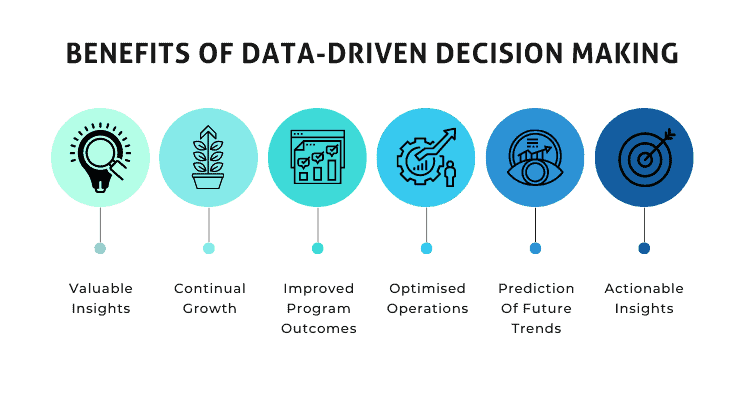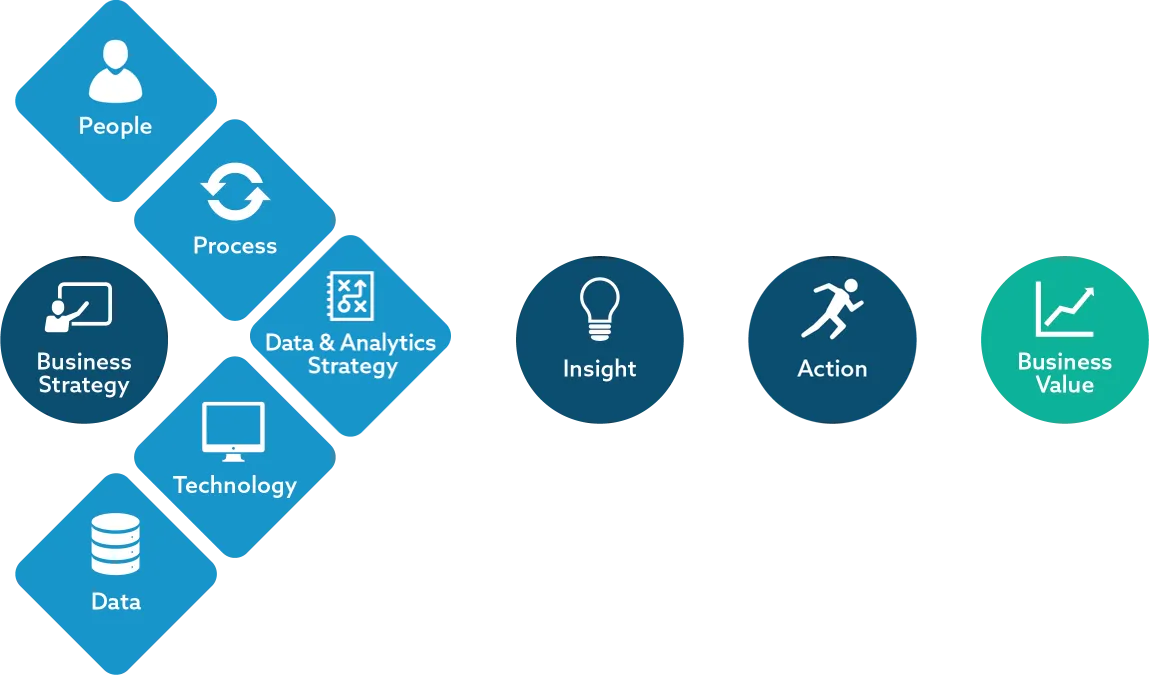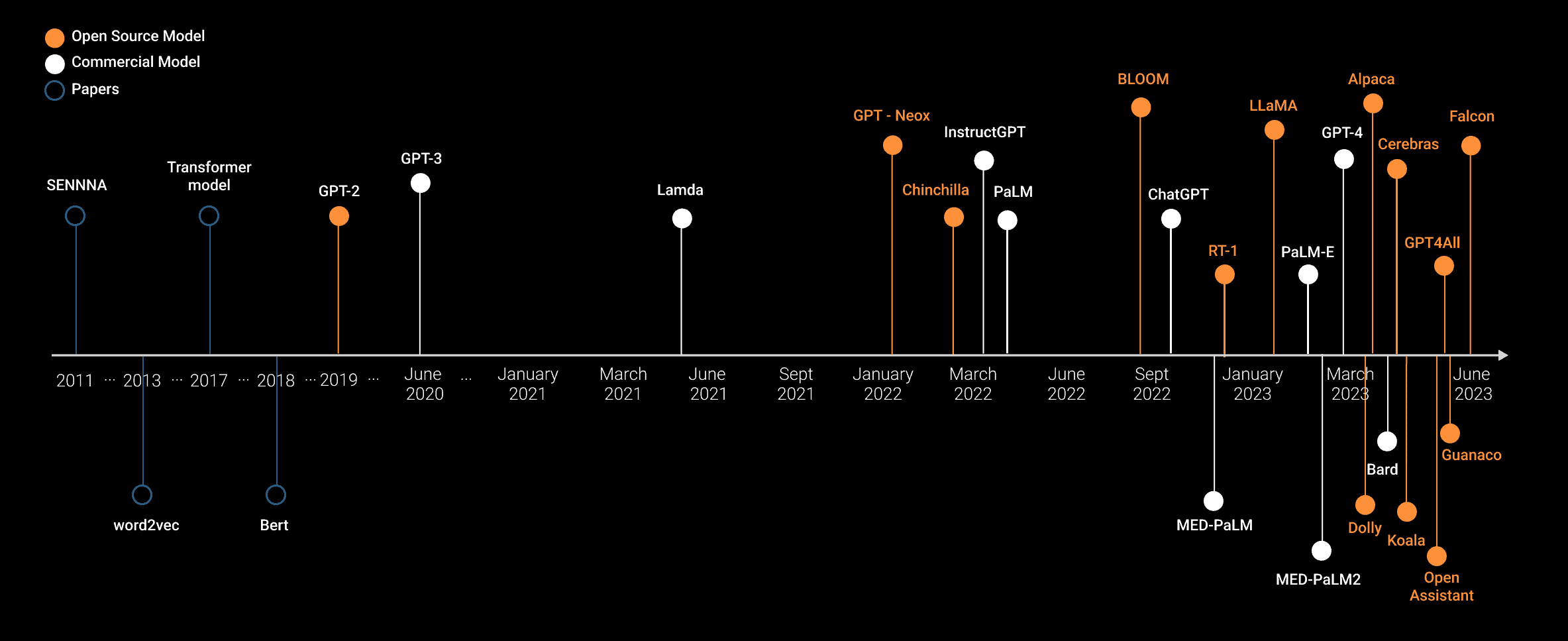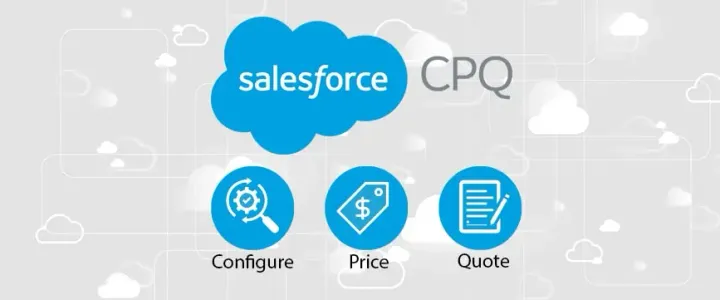From Data to Insights: Private LLM and GPT's Role in Business Intelligence
Explore how Lifelong Learning Models (LLM) and Generative Pre-trained Transformers (GPT) are revolutionizing Business Intelligence. Learn how these technologies transform raw data into actionable insights, driving sustainable growth and giving companies a competitive edge.

Examine how these technologies transform raw data into actionable insights that drive business growth. Data has rapidly emerged as one of the most valuable commodities in the constantly evolving landscape of modern business.
In today's business landscape, organizations are surrounded by a multitude of data ranging from industry giants to emerging startups. Amidst competition, constant innovation, and shifting markets, the ability to make decisions based on this wealth of information has become paramount. It is no longer sufficient to gather data; the true value lies in extracting insights that can guide a company toward achieving its goals and attaining success.
We delve into the importance of such decisions, the evolution from mere data collection to insightful interpretations, and how technologies like Private LLM and GPT have significantly impacted Business Intelligence (BI).
The Importance of Data-driven Decision-making in Modern Business
Imagine navigating through a dense forest without a map or compass. In many ways, modern businesses without a data-driven approach are like explorers without their essential tools. They might find their way out eventually, but at what cost regarding time, resources, and missed opportunities? Data-driven decisions give businesses a clear direction, allowing them to anticipate market changes, understand customer preferences, and optimize operations.

By integrating data into their core strategies, businesses can:
- Predict trends: Harnessing historical data can allow companies to forecast future trends, giving them a competitive advantage.
- Optimize resources: Knowing which strategies work and which don't can help businesses allocate resources more efficiently.
- Enhance customer experiences: Understanding customer behavior and preferences can help businesses tailor their products or services to meet customer needs better.
- Mitigate risks: Analyzing data can help identify potential threats or vulnerabilities in business operations, allowing for proactive solutions.
The Shift from Mere Data Collection to Actionable Insights
Many companies enthusiastically jumped onto the data collection bandwagon in the early days of digital transformation. However, they soon realized that merely collecting data was not the end goal. Without proper tools and strategies to interpret this data, companies found themselves with vast troves of information but no clear way to leverage it for growth.

Enter the era of actionable insights. This shift signifies businesses' evolution from data collectors to data interpreters. Instead of just hoarding data, the focus is now on:
- Quality over quantity: Prioritizing relevant data over sheer volume ensures businesses analyze information that can lead to actionable insights.
- Advanced analytics tools: Modern BI tools and platforms can sift through data at unprecedented speeds, identifying patterns, anomalies, and opportunities.
- Human-machine collaboration: Tools like GPT and Private LLM are revolutionizing how businesses interact with data. With machine learning models capable of understanding and generating human-like text, professionals can engage in meaningful dialogues with their data, leading to deeper insights and better decision-making.
The business world has evolved, placing data at its core. But it's not just about collecting data; it's about understanding it. With technologies like Private LLM and GPT playing an increasingly crucial role in BI, businesses are equipped to transform raw data into the gold of actionable insights. The future of business is not just data-driven; it's insight-driven.
The Basics: Understanding LLM and GPT
The Genesis of Large Language Models (LLM)
What are LLMs?
Large Language Models, commonly called LLMs, represent a subset of deep learning models primarily trained on vast amounts of textual data. Their core functionality revolves around understanding and generating human-like text. With their gigantic size, they can perform various language-related tasks, from simple text completion and translation to more intricate ones like generating articles, answering questions, or even producing poetry.
How do they differ from traditional models?
Traditionally, machine learning models required explicit hand-crafted features and a lot of domain expertise. In contrast, LLMs are trained on raw data, capturing complex patterns and relationships without requiring manual feature engineering. Furthermore, the sheer scale of LLMs, often containing billions or even trillions of parameters, far surpasses the size of traditional models. This enormous size enables them to store vast amounts of general knowledge and context, making them extremely versatile across many applications.
GPT and its Evolution
A brief history and evolution of the Generative Pre-trained Transformer series.
The Generative Pre-trained Transformer, or GPT, pioneered by OpenAI, stands as a testament to the power of LLMs. GPT, originating from the Transformer architecture, underwent several iterations:
-
GPT: Though powerful for its time, the original model needed to be more robust in its capabilities and size.
-
GPT-2: Marked a significant leap in size and capabilities. With 1.5 billion parameters, it showcased astonishing text generation abilities. However, due to concerns about potential misuse, its release was initially restricted.
-
GPT-3: The third iteration revolutionized the NLP domain, boasting a whopping 175 billion parameters. Its capability to perform diverse tasks without task-specific training (merely by instructing it) set a new standard for general-purpose AI models.
-
GPT-4 and beyond: Subsequent versions only added to the prowess of the series with more refined performance and broader applications.

Why GPT is significant in the context of data interpretation.
GPT's significance in data interpretation can't be overstated. Its adeptness at understanding context and generating coherent text means it can transform raw, unstructured data into meaningful, human-readable insights. Businesses today drown in data, and making sense of it is challenging and crucial. GPT serves as a bridge, converting vast data lakes into actionable insights.
For instance, imagine a corporation trying to grasp customer sentiments from thousands of reviews. Instead of manual sifting or relying on rudimentary sentiment analysis, GPT can provide a comprehensive summary, highlight key themes, and suggest potential improvement areas. It's like having an analyst who can read and understand vast amounts of data instantly.
The advent of LLMs and the GPT series, in particular, has shifted the paradigms of data interpretation and business intelligence. They simplify data understanding and provide a depth of previously unimaginable insight. As we continue to produce and rely on data, tools like GPT become beneficial and essential in navigating modern businesses' data-driven landscapes.
The Path from Raw Data to Insightful Information
Regardless of size, every modern business relies heavily on data to make informed decisions. This data, collected from myriad sources, is a compass for businesses to navigate the market's turbulent waters. However, the challenge lies in decoding and deriving actionable insights from this data. This section delves deep into how businesses traditionally process data and how the emergence of LLM and GPT technologies is revolutionizing the path from raw data to insightful information.
The Traditional Approach - How businesses handle data and the challenges therein.
Historically, data handling was a time-consuming process that involved a series of manual steps:
- Data Collection: Businesses would gather data from various sources such as sales, customer feedback, and market trends.
- Data Cleaning: Once collected, data often contained errors, duplicates, or irrelevant information. It had to be cleaned to ensure its accuracy and relevance.
- Data Analysis: Analysts would use statistical tools and software to crunch numbers, identify patterns, and derive preliminary insights.
- Interpretation: These insights were then interpreted in the context of business goals and strategies, often requiring domain-specific expertise.
While this method has yielded results, it's rife with challenges:
- Time-intensive: The entire process, from collection to interpretation, often took weeks or even months.
- Prone to errors: Manual data handling could introduce errors, leading to misleading insights.
- Skill-Dependent: Only professionals with specific skill sets could handle and interpret the data correctly.
The LLM & GPT Difference - How LLM and GPT simplify and expedite the data interpretation process.
Language Models like LLM (Large Language Models) and GPT (Generative Pre-trained Transformers) represent the new frontier in data interpretation. Their capabilities lie in their capacity to handle quantities of data and offer a level of understanding to that of humans but at an unparalleled speed. Let's explore further to see how they revolutionize the approach to data handling.
- Automated Data Cleaning: These models can be trained to identify and fix any irregularities in the data, which results in a dataset for analysis.
- Natural Language Processing: Than relying on numerical analysis, these models can comprehend and interpret data using natural language, making insights more easily understandable for individuals who may not have specialized knowledge in the field.
- Speed: What took weeks now takes minutes. LLM and GPT can quickly analyze vast datasets and provide real-time insights.
- Adaptive Learning: These models learn from new data, refining their understanding and improving their accuracy over time.
Case Studies
-
E-commerce Retailer: A prominent e-commerce platform used GPT to analyze customer reviews. Instead of manually sifting through thousands of reviews, GPT categorized feedback into themes (like 'delivery issues' or 'product quality'). This allowed the company to address pressing concerns promptly and tailor their services accordingly.
-
Financial Services: A bank deployed LLM to analyze market trends and provide daily investment insights. The model digested news articles, market fluctuations, and economic indicators to generate a daily report. Portfolio managers found this to be a game-changer, as they could make quicker and more informed decisions.
-
Healthcare: A hospital used LLM to study patient records and derive patterns about disease outbreaks. The model could predict potential epidemics by analyzing symptoms, diagnoses, and patient demographics, allowing the hospital to allocate resources better and implement preventive measures.
While the traditional data-handling process has served businesses for years, the advent of LLM and GPT technologies marks a transformative shift. These models don't just automate the data interpretation process; they empower businesses to extract deeper insights faster and more efficiently. The journey from raw data to insightful information has never been more streamlined.
Transforming Insights into Action for Business Growth
In this age of technology, we are surrounded by abundant information. However, it's more than having access to an amount of data that determines a business's success. The true winners are those who can effectively turn this data into knowledge and valuable insights.
Private Large Language Models (LLM) like GPT are pivotal in helping businesses derive meaningful patterns and trends from their data. After understanding these patterns, the next phase is translating them into actionable strategies to foster business growth. Here's how businesses are doing just that:
Beyond Just Understanding: Predictive Analysis with LLM and GPT
-
Anticipating Market Trends: Advanced predictive models, powered by LLM and GPT, can analyze historical market data, consider the present situation, and predict future trends. This gives businesses a leg up in preparing for what's coming and positioning themselves strategically.
-
Foreseeing Customer Behaviors: LLMs can help businesses anticipate customers' behavior by analyzing past behaviors, interactions, and purchase histories. For instance, if a customer has shown a pattern of buying winter wear every November, businesses can target them with tailored deals just before that month.
-
Identifying Potential Challenges: Predictive analysis isn't just about spotting opportunities; it's also about foreseeing challenges. For instance, a sudden spike in negative reviews could be a sign of a product flaw. LLMs can help identify such patterns early, allowing companies to mitigate problems before they escalate.
Tailored Business Strategies
-
Targeted Marketing Campaigns: Insights derived from LLMs allow marketers to segment their audience more precisely. Instead of a one-size-fits-all approach, businesses can now create marketing campaigns tailored to specific audience subsets, increasing conversion rates and ROI.
-
Improving Products/Services: By understanding the sentiments and feedback from customers, businesses can pinpoint areas of improvement in their offerings. LLMs can use vast feedback data to highlight common pain points, ensuring product development meets customer needs.
-
Optimizing Operations: Operational efficiency is a game-changer for businesses. By analyzing patterns in the supply chain, employee productivity, and other operational data, LLMs can suggest optimizations that can lead to faster delivery times, cost savings, and better resource management.
Enhanced Customer Experience
-
Understanding Feedback: Gone are the days of manually sorting through thousands of reviews or feedback forms. LLMs can automatically categorize feedback, extract key themes, and even gauge the sentiment behind them. This makes it easier for businesses to address concerns and improve.
-
Predicting Customer Needs: By understanding a customer's journey and previous interactions with a brand, LLMs can predict what a customer might need next. For instance, a customer who has just purchased a new DSLR camera might be in the market for a lens or a photography workshop.
-
Delivering Personalized Experiences: The modern customer values personalization. LLMs can help businesses tailor their digital experiences, from product recommendations to personalized content, ensuring that every interaction feels unique and relevant to the individual.
The evolution of LLMs, especially models like GPT, reshapes how businesses approach data and insights. The ability to not only understand but to predict and act is a competitive advantage in today's fast-paced market. Businesses that leverage these technologies effectively will be better positioned to anticipate market movements, tailor their strategies, and deliver exceptional customer experiences.
Addressing Privacy Concerns in Business Intelligence
Language Learning Models (LLMs) such as GPT (Generative Pre-trained Transformer) have shown a particular aptitude for parsing and analyzing large datasets to offer actionable insights. However, their potential comes with challenges, particularly in data privacy. In this article, we explore how private versions of LLMs and GPT can reconcile the need for powerful analytics with data protection concerns.
The Importance of Private LLM
Why Businesses are Leaning Towards Private Versions of LLM?
Data is a valuable asset, but it is often sensitive in nature. Businesses deal with customer information, trade secrets, and strategic plans that need to be guarded diligently. In using any BI tool, including LLMs like GPT, companies inadvertently expose this sensitive information. This poses a risk not just of external breaches but also the potential misuse of data by the tool or platform itself. Hence, there is a growing shift towards using private versions of LLMs, which are specifically designed to prioritize data privacy without compromising on the analytical power.
Balancing Intelligence with Privacy:
Private LLMs often come equipped with enhanced encryption algorithms and secure data processing practices that ensure the confidentiality of the data. These models can run within a company's private cloud or on-premise servers, thereby restricting access to the data and maintaining internal control. As a result, businesses do not have to sacrifice data security to leverage advanced analytics and natural language capabilities. This balance between intelligence and privacy makes private LLMs highly attractive to organizations that prioritize data protection.
Safeguarding Data and Building Trust
Steps and Measures in Place to Ensure Data Protection While Utilizing LLM and GPT
Trust is critical in the relationship between a business and its BI tools. Companies are increasingly cautious about who has access to their data and how it is being used. Below are some of the steps and measures commonly adopted to safeguard data while leveraging the capabilities of LLMs and GPT.
Data Encryption:
Private versions of LLMs frequently employ state-of-the-art encryption methods to ensure that data, both at rest and in transit, is secured from unauthorized access.
Regular Audits:
To ensure compliance with data protection laws and internal policies, regular audits are conducted. These audits scrutinize the data processing pipelines and ensure that no unauthorized access or data leakage has occurred.
User Access Controls:
Specific roles and permissions can be set for different team members to ensure that only authorized personnel have access to sensitive information. This minimizes the risk of internal data breaches.
Transparency and Accountability:
Businesses should opt for BI tools that offer a transparent overview of how data is processed and used. Such transparency can be a cornerstone in building trust.
Data Anonymization and Masking:
Techniques like data anonymization and masking can be applied before feeding the data into the LLM, thus ensuring that sensitive information is not exposed even during analysis.
Compliance with Regulations:
It's imperative for companies to ensure that their BI tools are compliant with local and international data protection laws, such as GDPR in Europe or CCPA in California. Compliance not only builds trust but also safeguards against potential legal repercussions.
Therefore, the use of private LLMs like GPT in Business Intelligence is increasingly gaining traction due to the balance they offer between robust analytical capabilities and stringent data protection measures. As the demand for data-driven insights grows, businesses no longer need to compromise on data privacy, thanks to advancements in private LLM technologies. By adopting these models judiciously and taking necessary precautions, companies can harness the full potential of Business Intelligence while ensuring that their most valuable asset, data, remains secure.
Case Study: Real-world Success Stories
The rise of advanced technologies like machine learning and natural language processing has revolutionized how businesses operate, offering transformative possibilities across sectors. Private Large Language Models (LLM) and GPT (Generative Pre-trained Transformers) are at the forefront of this change, driving remarkable progress in Business Intelligence (BI). From predicting market trends to elevating customer experiences, these technologies are shaping the future of businesses, governments, and even medical institutions.
Transforming Customer Service using GPT
A customer had been dealing with increasing volumes of customer queries and complaints. Although their traditional customer service systems were capable, they needed to improve in efficiently handling the surge. The introduction of GPT into their customer service domain was nothing short of transformative.
Firstly, GPT was trained to understand and categorize customer complaints, which allowed for a rapid and more accurate initial response. Subsequently, it was integrated with a decision-tree model to automatically offer solutions to customer queries. Not only did this significantly reduce the average response time, but it also improved customer satisfaction rates by up to 25%.
GPT's ability to adapt and learn from customer interactions was the real gem. It would update its decision-tree model based on new types of queries or responses, making it better equipped to handle diverse and complex questions in the future.
Predicting Market Trends with LLM
A prestigious customer, a major player in the retail industry, faced the challenge of staying ahead in a market characterized by rapidly changing trends. By employing Private LLM, they set a new standard in predictive analytics.
The LLM was configured to analyze multiple data streams, including social media buzz, customer reviews, and historical sales data. It identified emerging patterns and preferences that were still 'under the radar.' Based on these insights, the customer could make proactive decisions, like stock allocation and targeted marketing campaigns, staying ahead of competitors who were still reliant on reactive strategies. Within six months, the company witnessed a 15% increase in sales and a 10% rise in market share.
Transforming Digital Marketing using LLM and GPT
In the hyper-competitive world of digital marketing, a customer finds their secret sauce through a combination of LLM and GPT. LLM was utilized to analyze consumer behavior data and market trends, while GPT was employed to generate highly personalized and engaging content.
By integrating these insights, the customer managed to build a dynamic marketing model that captured attention and led to higher conversion rates. They experienced a 20% improvement in ROI on their marketing campaigns within just a quarter.
How LLM and GPT can help the Government in DOD?
The Department of Defense (DOD) can benefit immensely from LLM and GPT technologies. For instance, LLM can be used for analyzing huge datasets of cyber threats and geopolitical events, offering predictive insights that can be crucial for national security. Meanwhile, GPT can assist in automating the drafting and summarizing of lengthy policy documents, saving time and mitigating the risk of human errors.
More importantly, these models' adaptability and learning capabilities could help the DOD stay one step ahead in cyber warfare and defense mechanisms. They can also help optimize logistics, resource allocation, and emergency response during crises.
How LLM and GPT are changing the Medical Industry?
LLM and GPT are not just confined to business or governmental tasks; they are also making waves in the medical industry. These technologies are now being used to analyze complicated medical data, from patient records to research papers, offering diagnostics and treatment options at unprecedented speed and accuracy.
Moreover, GPT can be a virtual assistant for healthcare professionals, managing administrative tasks, summarizing medical history, or even helping draft and review scientific papers. This saves time and allows medical experts to focus on patient care.
Private LLM and GPT have emerged as game-changers in Business Intelligence. They can transform businesses, make governments more efficient, and even revolutionize medical care. The above case studies exemplify these technologies' practical and transformative power, heralding a new era of efficiency, insight, and opportunity.
LLM and GPT Technologies in Railways
The railway industry has played a role in mass transportation for over a hundred years, contributing to progress and shaping our world. However, even this established sector is not immune to the winds of change, especially regarding technology. The emergence of Lifelong Learning Models (LLM) and Generative Pre-trained Transformers (GPT) is starting to transform how rail operators approach systems like Supervisory Control and Data Acquisition (SCADA) and Track Intrusion Detection Systems (TIDS). Let's explore how these advanced technologies are reshaping the landscape of railway operations.
SCADA Rail Operations
Traditional SCADA Systems
Traditionally, SCADA systems in rail operations manage real-time data regarding train positions, speed, track conditions, and other operational aspects. These systems use historical data and pre-set algorithms to make decisions. However, they lack the ability to adapt to rapidly changing conditions or unexpected events effectively.
Role of LLM in SCADA
LLM's ability to continually learn from new data allows these systems to adapt over time. For instance, an LLM can analyze thousands of variables, such as weather conditions, track wear, and passenger volume, to optimize train schedules and energy usage continually. As the system encounters new scenarios, it can adjust its algorithms to ensure more efficient and safer operations.
Role of GPT in SCADA
GPT can contribute by analyzing unstructured data like maintenance logs, operator reports, and incident records, turning this information into actionable insights. These insights can help identify patterns or anomalies that might indicate the need for preventive maintenance or adjustments to operational protocols, making SCADA systems more proactive rather than reactive.
Track Intrusion Detection Systems (TIDS)
Traditional TIDS
TIDS are used to detect unauthorized intrusions onto the railway tracks, often using sensors and cameras. However, false alarms are common, and human intervention is generally required to validate an intrusion event.
Role of LLM in TIDS
LLMs can analyze the vast amounts of sensor data generated by TIDS, continually updating its understanding of what constitutes an "intrusion." This ongoing learning helps to reduce false alarms significantly and can even differentiate between different types of intrusions, such as humans, animals, or debris, allowing for a more nuanced response.
Role of GPT in TIDS
GPT can analyze the textual data associated with intrusion events, like incident reports and first-hand accounts from railway personnel. Through natural language processing, GPT can summarize these details and offer recommendations, making it easier for human operators to make quick, informed decisions during security events.
Case Studies
-
Weather Adaptability: LLMs incorporated into a railway SCADA system adapted to unexpected weather patterns, recommending adjustments in train speeds to minimize delays.
-
Preventive Maintenance: GPT analyzed years of maintenance logs to predict upcoming machinery failures, allowing the rail operator to take preventive action.
The railway industry stands on the cusp of a technological revolution fueled by the transformative capabilities of Lifelong Learning Models and Generative Pre-trained Transformers. These technologies enhance the adaptability and responsiveness of SCADA systems and improve the accuracy and functionality of Track Intrusion Detection Systems. They offer incremental improvements and a paradigm shift in how we approach railway operations. Integrating LLM and GPT into rail operations paves the way for safer, more efficient, and increasingly intelligent transport systems, marking a new era in railway technology.
The Future: What's Next for LLM, GPT, and Business Intelligence?
Emerging Trends and Innovations
The future is expected to bring an even more seamless integration of LLM and GPT into business intelligence tools. With advancements in model architecture and computing power, these technologies will become faster, more reliable, and even more versatile. We can anticipate innovations like:
-
Real-time Analysis: Faster processing capabilities will enable real-time sentiment analysis, making customer feedback immediate and actionable.
-
Collaborative Intelligence: Integration of LLM and GPT with other AI technologies like computer vision and IoT could create more comprehensive BI solutions.
-
Self-Improving Algorithms: Future models will be better at self-correction and adaptation, reducing the risk of misinterpretation of data.
-
Natural Language Querying: A more conversational interaction with data analytics dashboards, enabling stakeholders at all levels to extract insights without technical expertise.
-
Ethical AI: Increased focus on eliminating biases and ensuring ethical compliance will become a standard feature rather than an added benefit.
Preparing for the Future
To leverage the full potential of LLM and GPT, businesses can take the following steps:
-
Skills Development: Invest in team training to understand the basics of these technologies and how they can be applied in the context of your business.
-
Data Governance: Strengthen your data governance policies to protect privacy and ensure the ethical use of AI.
-
Infrastructure: Ensure your existing infrastructure can support the computational needs of these advanced models.
-
Pilot Programs: Before a full-scale rollout, consider pilot programs focusing on smaller tasks or departments to measure effectiveness and ROI.
-
Consult Experts: Partner with data scientists and AI experts to customize and implement the models effectively.
-
Stay Updated: Given the rapid technological advancements, regularly updating the models and staying abreast of regulatory changes is essential.
As LLM and GPT evolve, their role in business intelligence will only become more significant. Businesses that invest in understanding these technologies today will be better positioned to leverage their full potential tomorrow. The journey is becoming more efficient and intelligent thanks to the evolution of machine learning and natural language processing technologies, from data to actionable insights.
The Future: What's Next for LLM, GPT, and Business Intelligence?
Emerging Trends and Innovations
The future is expected to bring an even more seamless integration of LLM and GPT into business intelligence tools. With advancements in model architecture and computing power, these technologies will become faster, more reliable, and even more versatile. We can anticipate innovations like:
-
Real-time Analysis: Faster processing capabilities will enable real-time sentiment analysis, making customer feedback immediate and actionable.
-
Collaborative Intelligence: Integration of LLM and GPT with other AI technologies like computer vision and IoT could create more comprehensive BI solutions.
-
Self-Improving Algorithms: Future models will be better at self-correction and adaptation, reducing the risk of misinterpretation of data.
-
Natural Language Querying: A more conversational interaction with data analytics dashboards, enabling stakeholders at all levels to extract insights without technical expertise.
-
Ethical AI: Increased focus on eliminating biases and ensuring ethical compliance will become a standard feature rather than an added benefit.
Preparing for the Future
To leverage the full potential of LLM and GPT, businesses can take the following steps:
-
Skills Development: Invest in team training to understand the basics of these technologies and how they can be applied in the context of your business.
-
Data Governance: Strengthen your data governance policies to protect privacy and ensure the ethical use of AI.
-
Infrastructure: Ensure your existing infrastructure can support the computational needs of these advanced models.
-
Pilot Programs: Before a full-scale rollout, consider pilot programs focusing on smaller tasks or departments to measure effectiveness and ROI.
-
Consult Experts: Partner with data scientists and AI experts to customize and implement the models effectively.
-
Stay Updated: Given the rapid technological advancements, regularly updating the models and staying abreast of regulatory changes is essential.
As LLM and GPT evolve, their role in business intelligence will only become more significant. Businesses that invest in understanding these technologies today will be better positioned to leverage their full potential tomorrow. The journey is becoming more efficient and intelligent thanks to the evolution of machine learning and natural language processing technologies, from data to actionable insights.
Conclusion
The data revolution has ushered in unparalleled opportunities for businesses willing to invest in cutting-edge technologies like LLM and GPT.
These tools go beyond instruments; they are assets that possess the power to convert data into practical insights. With businesses expanding and the world continuously evolving, the capability to adjust and base decisions on data becomes increasingly crucial.
LLM's ongoing learning capabilities and GPT's natural language prowess combine to elevate business intelligence from a buzzword to a foundational element for sustainable growth. Businesses that harness these technologies stand to gain a competitive edge, achieving short-term profits and long-term resilience and adaptability.




